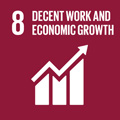- Docente: Chiara Orsingher
- Credits: 8
- SSD: SECS-P/08
- Language: Italian
- Moduli: Chiara Orsingher (Modulo 1) Riccardo Pirazzoli (Modulo 2)
- Teaching Mode: Traditional lectures (Modulo 1) Traditional lectures (Modulo 2)
- Campus: Bologna
-
Corso:
First cycle degree programme (L) in
Business Administration (cod. 8871)
Also valid for First cycle degree programme (L) in Management and Marketing (cod. 8406)
Learning outcomes
The course provides a comprehensive overview of advertising and promotion. It creates a clear understanding of traditional advertising and promotional tools, and shows how other key elements within the marketing communications mix ( e.g., advertising, direct marketing, promotion and the Internet) can be integrated.
Course contents
The course is divided in two modules. In the first module, students are instructed about the relevant theories and the tools that are useful to develop an effective communication and advertising plan. Example about real offline and online advertising complement the issues that are discussed in class.
At at general level, the course deal with the following topics:
- Communication objectives
- The elaboration likelihood model
- The copy strategy
- The communication budget
- Media Planning
- Communication for Customer Engagement
- Communication on Social Media
- Advertising effectiveness
In the second module (held by Riccardo Pirazzoli) the focus is on digital communication and on positioning strategies, both from a theoretical and an operational point of view.The skills acquired in the first module are exploited to develop a project to be carried out in a team of 5-6 people.
Analysis-1: The KPIs (quantitative and qualitative) of communication: what they are, how they are read and what role they play in strategies
Analysis-2: Algorithms: how they affect communication and creative strategies
Analysis-3: positioning: semiotic tools to identify the right positioning of a brand / product in the market
Operation: The digital funnel process: what it is, why it is important to exploit it in communication processes, to whom it is addressed, what objectives, how it is measured, what means
The Teaching Assistant for this course is Ms. Marina Berton - marina.berton@unibo.it
Classes are held during the months of September - October (first module) and November- December (second module)
Readings/Bibliography
First module:
Collection of selected readings extracted from italian and english
textbooks available at "Asterisco" Via Belle Arti 35 (next to the
Bigiavi library) from Sept. 15th
Looking for the street? Go to:
http://www.unibo.it/CMSUniboWeb/UniboMappe/
Second module:
a) for students who attend group work: the evaluation is based on the group work and on the following book Grandi Roberto, Miani Mattia (2006), L'impresa che comunica. ED. ISE
Teaching methods
First module: Interactive class teaching, videos, short case studies
Second module: Interactive class teaching, slides that are made available to students, group work
Assessment methods
The assessment aims to ascertain two aspects of learning:
1) knowledge of concepts, theories and techniques of communication
2) the ability to apply this knowledge to a real context.
To assess the first aspect, the test consists of a written exam with open questions.
To assess the second aspect, the test involves the preparation and presentation of the group work.
First module: Written exam with open ended questions and few multiple choice questions
Second module
For those who carry out group work: the concepts learned during the course must be applied in group work. Each group will choose a business case and will have to study its positioning and then devise an ad hoc funnel process, arguing each creative choice on quantitative and qualitative data. Furthermore, to ascertain the knowledge of the theoretical concepts discussed in class and their application, attending students will have to take a written exam with open questions on the text in the bibliography. This exam involves a single question (of reasoning) to be answered demonstrating both the knowledge of the concepts and the ability to reason and apply these concepts in a personal way. The absence of a good argument is a mistake.
For those who take the total exam or the exam for non-attending students: Written exam with 3 open-ended questions each of 10 points each.The questions focus on the text indicated in the bibliography and require:
- knowledge of the text
- individual reasoning on the concepts of the text
The overall grade is the arithmetic average of the results of the two checks.
The test assessment grid will be as follows:
· <18 insufficient
· 18-23 sufficient
· 24-27 average/good
· 28-30 very good
· 30 cum laude excellent/outstanding
Teaching tools
Case studies, examples form the business press and participants' consumption experiences
Office hours
See the website of Chiara Orsingher
See the website of Riccardo Pirazzoli
SDGs


This teaching activity contributes to the achievement of the Sustainable Development Goals of the UN 2030 Agenda.
